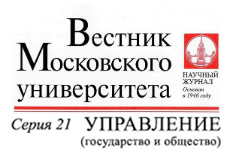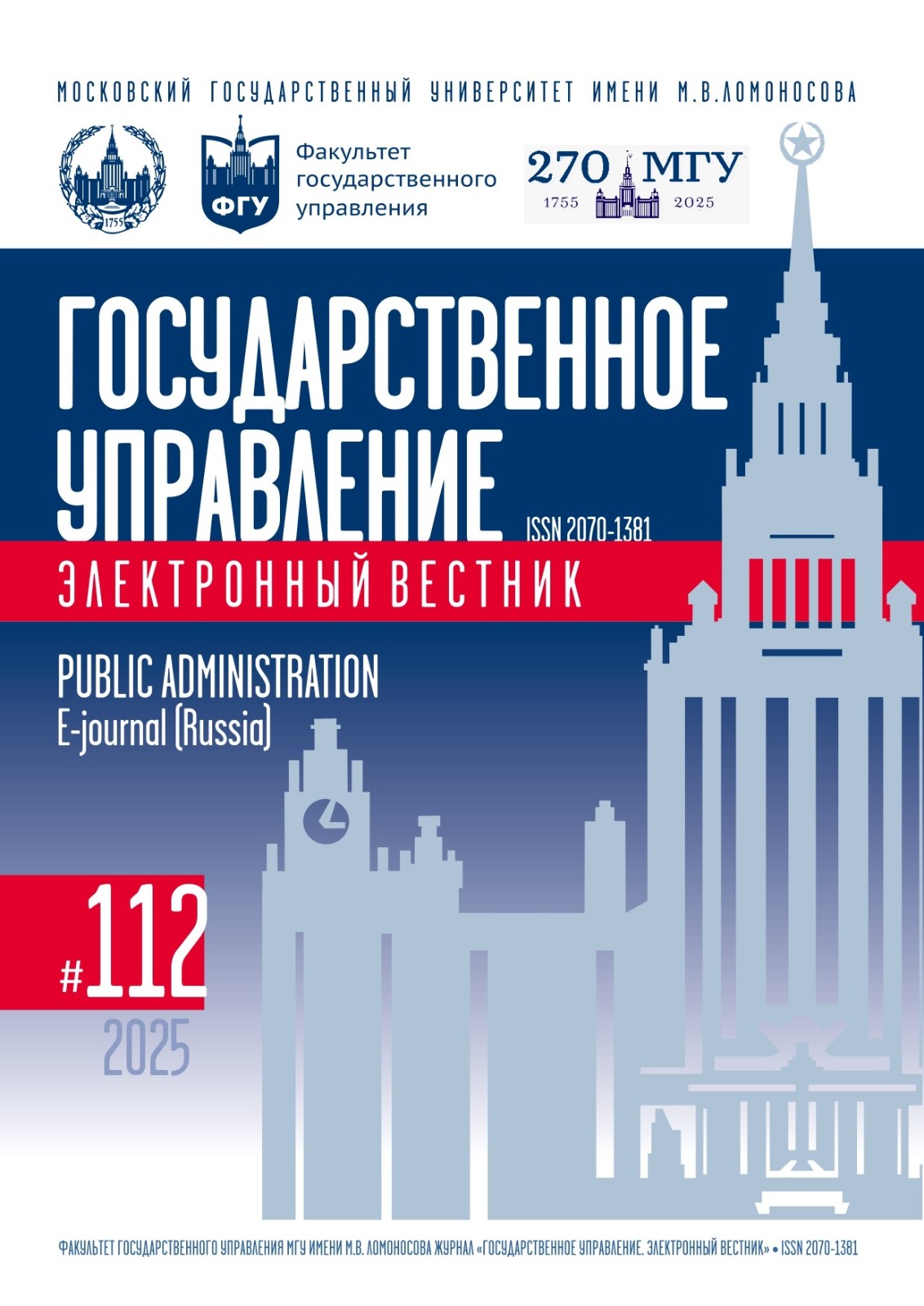Economic and Mathematical Model for Assessing Synergetic Effect of Lean Production and Digitalization Joint Implementation on Industrial Enterprise
DOI:
https://doi.org/10.55959/MSU2070-1381-112-2025-29-44Keywords:
Lean production, integration, evaluation, industrial enterprise, synergetic effect, digitalization, digital lean production, economic and mathematical model.Abstract
Modern industrial enterprises face the need to increase operational efficiency through process optimization. This is defined by growing international competition, the accelerating pace of technological change, and the need for manufacturing organizations to adapt to dynamic market conditions. In these conditions, lean production and digital technologies form the basis for achieving sustainable economic growth and increasing competitiveness in the global commodity market. Lean production, aimed at eliminating losses, improving processes and increasing value for the end user, as well as modern digital technologies such as big data, artificial intelligence and the Internet of Things, create additional opportunities for increasing the economic efficiency of the enterprise, allowing automating routine tasks, improving resource management by increasing flexibility and decision-making efficiency. Numerous studies confirm that the isolated implementation of lean production or digitalization makes a significant contribution to reducing losses and increasing productivity. At the same time, their joint use can create a synergistic effect that will allow achieving additional improvements in the economic performance of the enterprise due to the flexibility of processes, high product quality and cost reduction. Despite this, the issue of assessing the synergetic effect of the joint integration of lean production and digitalization remains insufficiently studied. Most studies focus on various aspects of the individual application of these approaches, while forecasting and quantifying their combined application are practically not considered in the literature. The lack of mathematical models that take into account the mutual impact of lean production and digitalization makes it difficult to plan and optimize their implementation, especially in enterprises where these tools have already been partially implemented. Based on the analysis of existing approaches to assessing the synergetic effect, the article develops an economic and mathematical model for assessing the synergetic effect in the joint implementation of lean production and digitalization in an industrial enterprise. The limitations of the model have been identified, compliance with which will allow achieving positive synergy. The proposed model is a necessary tool for assessing the growth potential of an organization’s economic efficiency, improving forecasting accuracy, and justifying a strategy for implementing digital lean production based on the specific operating conditions of enterprises and ensuring the long-term sustainable development of the Russian industry.
References
Бабосов Е.М. Синергетическое взаимоусиление цифровизационных процессов и человеческой креативной деятельности // Экономика. Социология. Право. 2023. № 2(30). С. 33–39. DOI: 10.22281/2542-1697-2023-02-02-33-39
Болдыревский П.Б., Игошев А.К. и Кистанова Л.А. Исследования синергетических эффектов и цикличности современных экономических систем // Экономический анализ: теория и практика. 2018. Т. 17. № 11. С. 2166–2178. DOI: 10.24891/ea.17.11.2166
Вагин М.С., Ивченко Б.П. Классификация инструментов бережливого производства // Актуальные вопросы современной экономики. Материалы V Международной научно-практической конференции. СПб: Балтийский государственный технический университет «ВОЕНМЕХ» им. Д.Ф. Устинова, 2024. С. 157–160.
Геворкян Г.А. Механизм оценки синергетического эффекта // Экономика и социум. 2023. № 6–1(109). С. 664–674.
Дамодаран А. Инвестиционная оценка. Инструменты и методы оценки любых активов. М.: Альпина Паблишер, 2020.
Ижгузина Н.Р. Синергетический эффект крупных городских агломераций региона: методология исследования // Наука Красноярья. 2016. Т. 5. № 5. С. 111–131. DOI: 10.12731/2070-7568-2016-5-111-131
Королькова М.В. Сравнительный анализ методов оценки эффективности комплекса взаимосвязанных инвестиционных проектов // Актуальные вопросы экономики и социологии: сборник статей по итогам XIV Осенней конференции в Новосибирском Академгородке. Новосибирск: ИЭОПП СО РАН, 2018. С. 204–209.
Козенкова Т.А. Методические подходы к оценке синергетического эффекта финансово-экономической интеграции // Стратегии бизнеса. 2014. № 1(3). С. 51–62.
Колычев В.Д., Белкин И.О. Интеграция бережливого производства и цифровых технологий в управление операционной деятельностью промышленных предприятий // Известия Высших учебных заведений. Серия: Экономика, финансы и управление производством. 2023. № 3(57). С. 45–58. DOI: 10.6060/ivecofin.2023573.653
Кондрашова А.В., Сироткин В.А., Паремузова М.Г., Седова В.Д. Актуальность применения технологии бережливого производства в сельскохозяйственных и промышленных предприятиях // Вестник Академии знаний. 2024. № 5(64). С. 227–230.
Щеглов Д.К., Сайбель А.Г. Формализованный подход к прогнозированию сроков и стоимости разработки военно-технических систем // Оборонный комплекс — научно-техническому прогрессу России. 2022. № 3(155). С. 33–44. DOI: 10.52190/1729-6552_2022_3_33
Левенцов В.А., Левенцов А.Н. Бережливое производство и проблемы его цифровизации // Современные наукоемкие технологии. 2023. № 1. С. 20–25. DOI: 10.17513/snt.39493
Шевырев М.М. К методологии определения синергетического эффекта инновационных региональных кластеров // Экономика и управление. 2010. № 3(53). С. 36–40.
Bortolotti T., Boscari S., Danese P. Successful Lean Implementation: Organizational Culture and Soft Lean Practices // International Journal of Production Economics. 2015. Vol. 160. P. 182–201. DOI: 10.1016/j.ijpe.2014.10.013
Buer S.V., Semini M., Strandhagen J.O., Sgarbossa F. The Complementary Effect of Lean Manufacturing and Digitalisation on Operational Performance // International Journal of Production Research. 2021. Vol. 59. Is. 7. P. 1976–1992 DOI: 10.1080/00207543.2020.1790684
Marcondes G.B., Rossi A.H.G., Pontes J. Digital Technologies and Lean 4.0: Integration, Benefits, and Areas of Research // Industrial Engineering and Operations Management. Springer Proceedings in Mathematics & Statistics. 2023. Vol. 431. P. 197–209. DOI: 10.1007/978-3-031-47058-5_16
Rossini M., Dafne Cifone F., Kassem B., Costa F., Portioli-Staudacher A. Being Lean: How to Shape Digital Transformation in the Manufacturing Sector // Journal of Manufacturing Technology Management. 2021. Vol. 32. Is. 9. P. 239–259 DOI: 10.1108/JMTM-12-2020-0467
Shah R., Chandrasekaran A., Linderman K. In Pursuit of Implementation Patterns: The Context of Lean and Six Sigma // International Journal of Production Research. 2008. Vol. 46. Is. 23. P. 6679–6699. DOI: 10.1080/00207540802230504
Shcheglov D.K. Express Method for Determining Deadlines and Costs of Project Design Works by Defense Industry Enterprises // Инновации в менеджменте. 2024. № 1(39). С. 46–54.
Tortorella G.L., Fettermann D. Implementation of Industry 4.0 and Lean Production in Brazilian Manufacturing Companies // International Journal of Production Research. 2018. Vol. 56. Is. 8. P. 2975–2987. DOI: 10.1080/00207543.2017.1391420
Treviño-Elizondo B.L., García-Reyes H., Peimbert-García R.E. A Maturity Model to Become a Smart Organization Based on Lean and Industry 4.0 Synergy // Sustainability 2023. Vol. 15. DOI: 10.3390/su151713151
Zaytseva T.V. Human Resource Management in Russia // Global Encyclopedia of Public Administration, Public Policy, and Governance / ed. by A. Farazmand. Cham: Springer, 2018. P. 3120–3128. DOI: 10.1007/978-3-319-31816-5_2944-1
Downloads
Published
Most read articles by the same author(s)
- Oleg A. Chernov, Elena S. Palkina, Modernizing the IMO Member State Audit Scheme to Increase Efficiency of Maritime Transport , Public Administration. E-journal (Russia): No. 101 (2023)
Similar Articles
- Alexander S. Koretsky, Principles of Forming Digital Ecosystem of Process Management Based on Business Model , Public Administration. E-journal (Russia): No. 84 (2021)
- Elena N. Veduta, Liparit A. Gegamyan, Artificial Intelligence in Ensuring Sustainable Economic Development , Public Administration. E-journal (Russia): No. 110 (2025)
- Vladislav A. Efanov, Assessment of Informatization of Social Production Impact on Economic Growth , Public Administration. E-journal (Russia): No. 88 (2021)
- Lidiya S. Leontieva, Marianna V. Kudina, Aleksandr S. Voronov, Stepan S. Sergeev, Creating National Digital Sovereignty in the Context of Spatial Development Differentiation , Public Administration. E-journal (Russia): No. 84 (2021)
- Dmitry V. Bunkovsky, Risks of Technological Dependence of Entrepreneurial Entities in the Oil and Gas Chemical Complex , Public Administration. E-journal (Russia): No. 112 (2025)
- Daria V. Evtyanova, Artificial Neural Networks as a Tool for Economic Development Planning , Public Administration. E-journal (Russia): No. 84 (2021)
- Vitaly A. Toropchin, Viktoria V. Lazareva, Methodological Aspect of Evaluating the Effectiveness of Public Policy in Depressed Regions , Public Administration. E-journal (Russia): No. 105 (2024)
- Matvey S. Oborin, Mechanisms for Stimulating Innovative Development of Single-Industry Towns in Arctic Territories , Public Administration. E-journal (Russia): No. 91 (2022)
- Larisa V. Lapidus, Role of Technological Innovations in Business Development and Digital Transformation in Eurasian Economic Union Countries , Public Administration. E-journal (Russia): No. 95 (2022)
- Andrey R. Shevchuk, Vladimir S. Osipov, Verification of Predictive and Explanatory Power of the Solow Economic Growth Model Based on Modern Statistical Data of Germany and France (in Memoriam of Robert Merton Solow (August, 23, 1924 – December, 21, 2023)) , Public Administration. E-journal (Russia): No. 102 (2024)
You may also start an advanced similarity search for this article.




